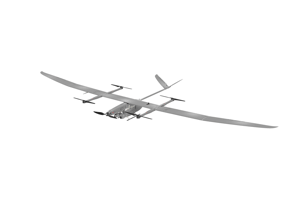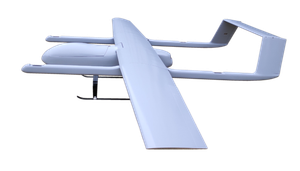
Advantages of VTOL UAV
Drones are well-known for zipping around in the atmosphere. Drones with vertical takeoff and landing (VTOL UAV ) capabilities are vital to the industry’s overall future. Let’s take a look at how manoeuvrable and usable these vertical takeoffs and landings drones are.

What makes VTOL so important for drones?
Drones must be expanded from remote and restricted areas to have full effect in some situations and use cases. Drones must be run with minimum facilities and within minimal range, whether performing surveillance and scrutiny over high altitudes across the border, infiltration-affected region, disaster-stricken areas, and so on.
The first advantage of VTOL drones, they are easier to transport, set up, deploy, and control. The ground control station (GCS) can be carried to any remote location near an operator’s observing station. This may be on an offshore oil platform, a building site, or even street sidelines to track traffic or crowds. From a single location, the drones will take off vertically to a safe hovering or moving altitude. If the drone hasn’t gone in the wrong direction, this is where it will return.
To cover the entire spectrum of use-cases, from arid deserts to congested cities, VTOL is required. The administrating and driving processes are easy, resulting in a low training curve. This is the first step toward bringing drones into the commercial domain for a variety of uses.
What are the advantages of vertical landings and takeoffs?
Depending on the use, drones have evolved from a variety of takeoff types. There are HTOL, hybrids, slingshot launches, and other options. VTOL drones have several advantages over their non-VTOL counterparts. Drones can be taken to distant and limited areas for fast and easy deployment. They’re simple to set up and takedown.
- Control: These drones have multiple rotors for lift and thrust, which allows them to fine-tune their performance. For finer reviews, they may travel parallel to the surface of an industrial asset. For thorough surveying and mapping of an area, they can integrate sharp and dynamically triggered turns. They can also adjust their speed to match every moving goal’s speed depending on the situation.
- Hovering: These drones can stay in one place for an extended period. This is required for detailed inspections, reviews, or photography of the properties or area in question. The built-in payload can be positioned at any point during the flight to provide more information.
What role will commercial drones play in the future?
Commercial crewless aerial vehicles (UAVs) have been around for a while, evolving technologically and applications over the last decade. Drone-assisted package delivery has become a reality. Drones are being used by road and rail authorities to monitor hundreds of kilometers of routes for maintenance issues. Drones are often used as first responders in public emergencies to find people who need to be rescued.
Any technology must go through a process of testing and acceptance. Drones also passed both tests, with businesses scrambling to introduce them as soon as possible. The next step will be to scale effectively. VTOL is the only way to deploy up to 100 drones from a distribution center.
VTOL is critical for realizing economies of scale for drones in every industry from a human and administrative standpoint. As a result, mastering and perfecting vertical takeoffs and landings are critical for drones’ potential success.




